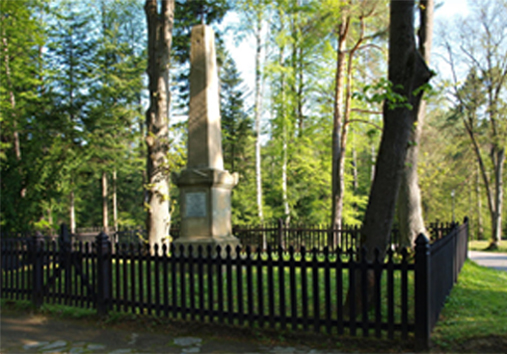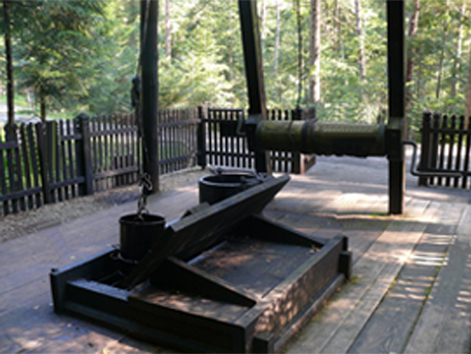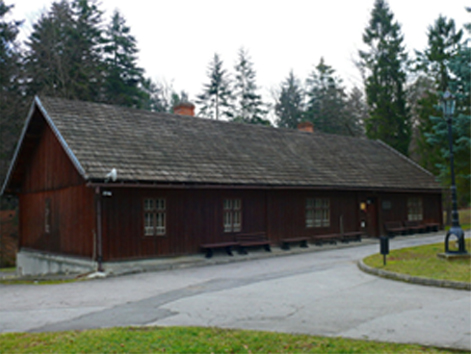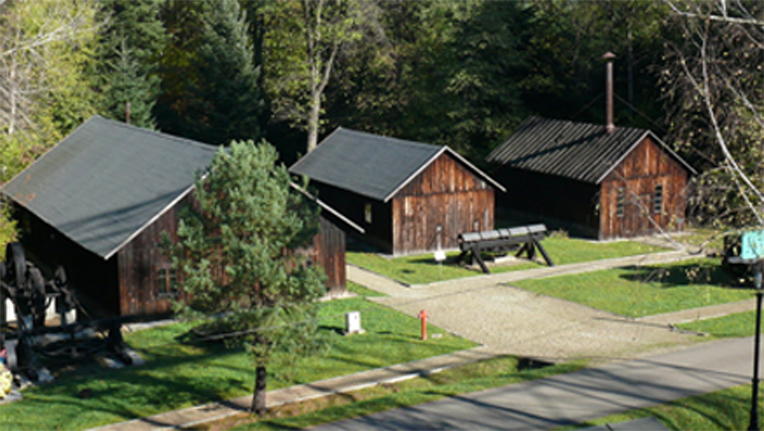



OIL FIELD IN BÓBRKA
Natural seepages of crude oil had been taking place in the forest in Bóbrka for a long time, but it was not until 1854 when the oil field was established, and the industrial exploitation began. The pioneers of oil industry and the founders of the oil field in Bóbrka were: Ignacy Łukasiewicz – a modest pharmacist; Tytus Trzecieski – a landowner and the initiator of establishment of the oil field, and Karol Klobassa-Zrencki – the owner of Bóbrka. Thanks to smooth cooperation, engagement and great operability of the creators, the first multidimensional oil company in the world was founded.
ON 31 JULY 1853 in a hospital in Łyczaków district in Lwów kerosene lamps were lit publically for the first time. This date went down in history as the symbolic date of THE ADVENT OF OIL INDUSTRY.
In 1854 Łukasiewicz was invited by Tytus Trzecieski to Bóbrka, where natural seepages of crude oil were discovered. In 19th century crude oil was called „rock oil”. Trzecieski proposed the establishment of an oil company which would be concerned with exploitation of the deposit in Bóbrka. They began to drill the first pits – crude oil wells. In 1855 in „Wojciech” pit was discovered a large oil flow. It was followed by the establishment of the distillery in Ulaszowice in 1856.
In 1861 the oil company was officially created, although the agreement was concluded only verbally. Trzecieski invested in cash, Klobassa donated the land for building of the oil field, and Łukasiewicz assumed leadership of the whole company.
The thriving enterprise was dissolved on Łukasiewicz’s initiative in 1871, when he resigned from 1/3 of company shares, remaining at the same time a director. He still ran the refinery and bought from the shareholders raw material to be distilled, but he did not receive the income from the oil field which was famous for perfect organisation and modern methods of extraction. Labourers came from local villages.
The basis of the oil field was a ditch with a length of 120 metres and a depth of 120 centimeters which was dug in a place called Wrzanka, where heavy oil spills were observed. Łukasiewicz modernised the enterprise using the expert advice of contemporary authorities in the field of geology and well drilling. He was assisted in improving drilling methods by Adolf Jabłoński and Henryk Walter, who introduced percussion drilling by means of Fabian’s free fall jars. A large improvement was the introduction of a drive of steam engine by Albert Fauck, which eliminated to a large extent the human effort and made it possible to drill up to a depth of 240 metres.
Łukasiewicz became completely engaged in crude oil processing, obtaining exceptionally good kerosene types. Global tycoons of oil industry got interested in him. He distributed refinery products in shops in Tarnów, Kraków and Warsaw. He was personally engaged in advertising petroleum products, taking part in national and international exhibitions. He combined industrial activity with public and social one.
After Łukasiewicz’s death the oil field was directed by Adolf Jabłoński, and then Zenon Suszycki. The oil field in Bóbrka survived the turmoil of war and experienced another revival in the 1950s, when a new deposit was discovered on the southern fold of the anticline. On the premises of the museum there are still active oil wells.


